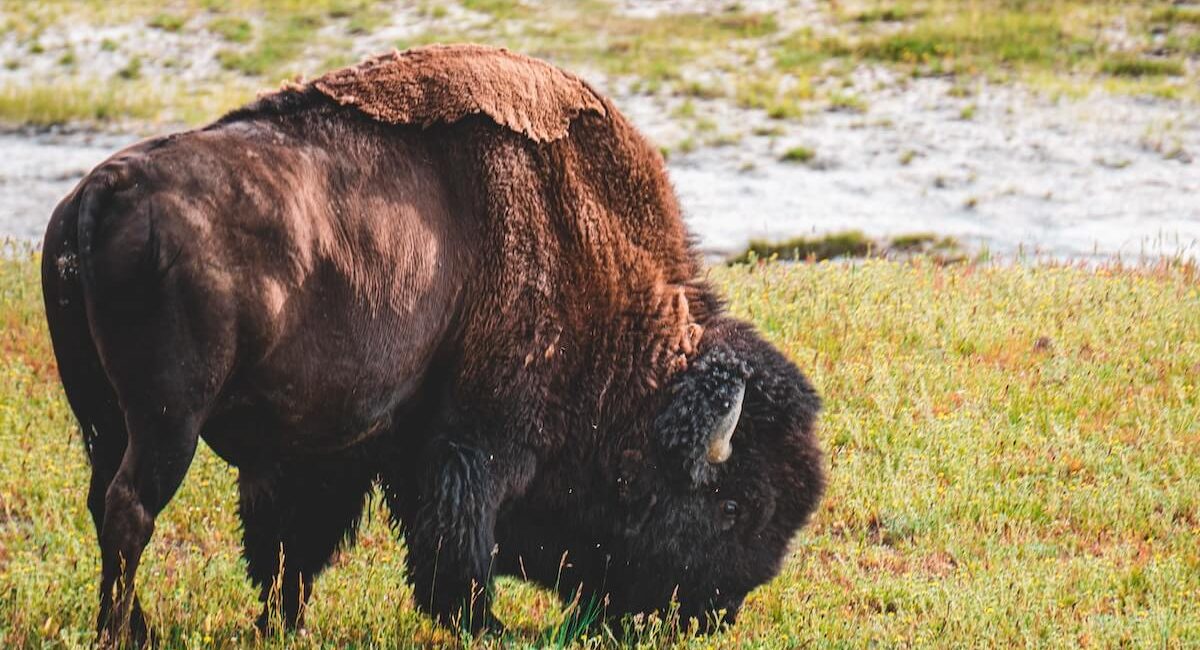Bison: Survivors of Extinction
Bison, also known as American buffalo, once roamed in large herds across the grasslands of North America. They were an integral part of the ecosystem and played a crucial role in the lives of the native people. However, due to hunting and habitat loss, their population was decimated to near extinction. Today, bisons have made a remarkable recovery and are considered a conservation success story. In this article, we will explore the history of bisons, their near-extinction, and their road to recovery.
Introduction – once on the brink of extinction
Bisons are large, shaggy-haired mammals that belong to the Bovidae family. They are native to North America and are closely related to cattle and other bovines. Bison have a distinctive hump on their back, a large head, and two curved horns. They can weigh up to 2,000 pounds and stand over six feet tall.
The History of Bison
Bison have been an important part of the ecosystem in North America for thousands of years. They were hunted by the native people for their meat, hides, and bones, which were used for tools and weapons. Bison also played a spiritual role in the lives of many tribes and were considered a symbol of strength and endurance.
When European settlers arrived in North America, they began hunting bisons in large numbers for their hides, which were used to make leather goods. The introduction of firearms made hunting bison easier, and the herds began to decline rapidly. By the late 1800s, the bisons population had plummeted to less than 1,000 animals.
Bison Conservation
Efforts to conserve bisons began in the early 1900s, with the creation of national parks and reserves. These protected areas allowed bisonsto thrive and increase in numbers. Bisons were also reintroduced to areas where they had been extirpated, such as Yellowstone National Park.
Today, there are an estimated 500,000 bison in North America. They are found in national parks, reserves, and on private ranches. Bison are also raised for their meat, which is lean and high in protein.
Economic and Environmental Significance
The bison’s comeback has been a boon to both the economy and the environment. Bison meat has become increasingly popular in recent years, with more and more people seeking out this lean, healthy, and sustainable protein source. Bison ranching has become a profitable industry, and bison hides are still used for leather goods. Additionally, bison are essential to maintaining healthy grasslands ecosystems. They graze on tough grasses, promoting new growth and providing habitat for other animals.
Cultural Significance
The bison’s cultural significance has also endured. Many Indigenous peoples continue to honor and celebrate the animal in their traditions and ceremonies. The bison has also become a symbol of resilience and survival, inspiring people around the world.
The Role of Bisons in Ecosystems
Bisons play an important role in the ecosystems where they live. They are considered a keystone species, which means they have a disproportionate effect on the ecosystem relative to their abundance. Bisons grazing can help maintain the health and diversity of grasslands, which in turn benefits other wildlife species. Bisons also create wallows, which provide habitat for other species, such as amphibians.
Bison and Indigenous Peoples
Bisons have played a significant role in the lives of the indigenous peoples of North America. They were used for food, clothing, and shelter, and their hides were used for tools and weapons. Bisons were also a spiritual symbol and were revered for their strength and endurance.
Today, many indigenous communities continue to have a deep connection to bison and work to protect and conserve them. There are also programs that allow indigenous people to hunt bisons for subsistence and cultural purposes.
Threats to Bisons
Although bison populations have increased in recent years, they still face threats to their survival. Habitat loss, fragmentation, and disease are all issues that impact bison populations. In addition, bison can be susceptible to overgrazing and competition with livestock.
Conclusion
Bisons are a conservation success story and a symbol of the resilience of nature. They have survived near-extinction and continue to play an important role in the ecosystems of North America. Efforts to protect and conserve bisons must continue to ensure their survival for future generations.
FAQs
- Why are bisons important? Bisons play an important role in the ecosystems where they live and have cultural significance for many Indigenous peoples. As a keystone species, bison grazing can help maintain the health and diversity of grasslands. Their grazing behavior can also create and maintain habitats for other species, such as prairie dogs and burrowing owls.
- Why were bison hunted to near-extinction? Bisons were hunted by European settlers in North America for their hides, which were used to make leather goods. The introduction of firearms made hunting bison easier, and the herds began to decline rapidly.
- How many bison are there in North America? There are an estimated 500,000 bison in North America.
- What is the role of bisons in ecosystems? Bisons are considered a keystone species, which means they have a disproportionate effect on the ecosystem relative to their abundance. Bisons grazing can help maintain the health and diversity of grasslands, which in turn benefits other wildlife species.
- What are the threats to bison? Bisons still face threats to their survival, including habitat loss, fragmentation, disease, overgrazing, and competition with livestock.




Leave a Comment